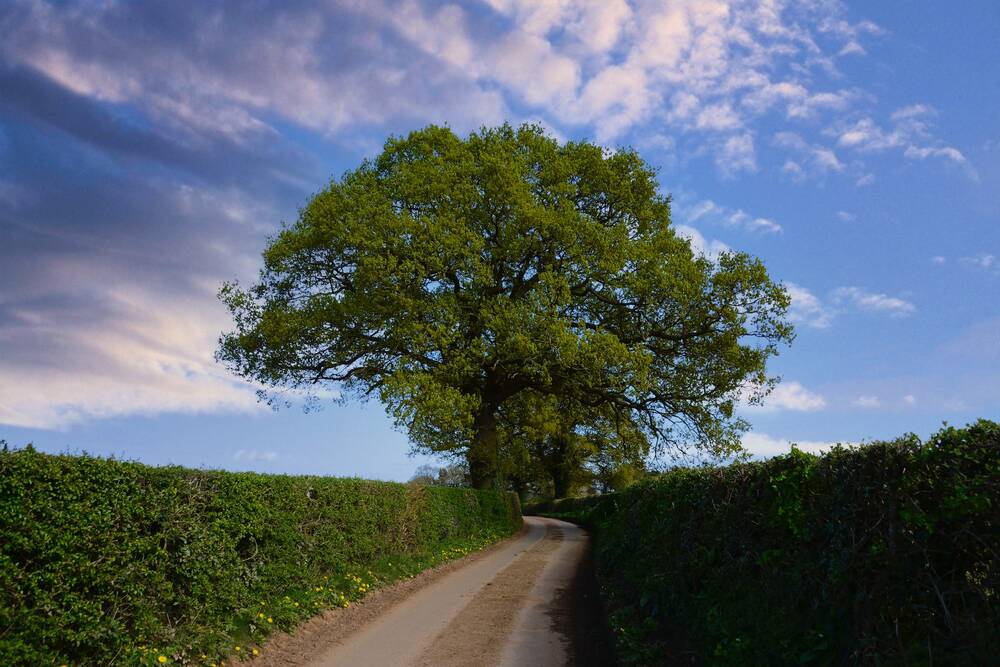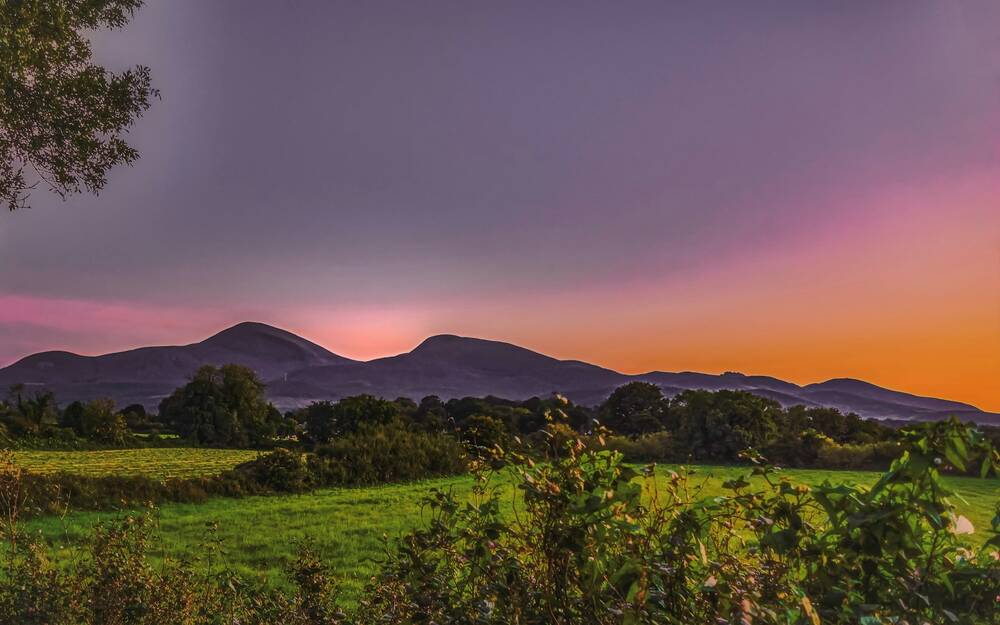A long hedge, or a hedgerow, is a beautiful symbol of the thriving British countryside. They line a majority of fields, paddocks and farms across all of the UK’s rural landscape and provide essential functionality to agriculture, separating livestock from harm and neatly compartmentalizing land structures. They contribute to the visual appeal of an area; lush picturesque greenery that outlines the fields, while holding immense historical and cultural significance.
Their deep history is rooted in the initial foundations of agricultural practices, paving the way for futures to come. This blog gives an overview of the origin of hedgerows and how they have evolved over the ages, to the modern day. It explains their importance and delves into their value.
They form a key part of understanding what biodiversity units are, and how you can buy and sell them.
What are Hedgerows?
There are over 500,000 miles of hedgerows in the UK, with the average hedgerow around 1,200 metres long. Hedgerows are commonly seen dividing farms and fields with their neat lines; a picturesque feature of a countryside landscape that holds rich cultural value in England. They are lines of shrubs, bushes or trees closely planted together and have to be regularly trimmed and replanted to maintain the hedgerow shape and maintain effectiveness, such as preventing the escape of wandering livestock.
Beyond field boundaries, hedgerows mark the divide between properties or create a private back or front garden, and roads, enhancing the appeal of roadside aesthetics and stabilising soil while preventing erosion.
A maintained hedgerow provides a rich biodiverse habitat that reliably supports over 600 plant species, 1,500 insect species and countless birds and mammals, plus allows them to travel through fragmented habitats by acting as wildlife corridors. They can help protect crops, strengthen and regulate a microclimate and are central to rural landscapes alongside farming tradition.

Origins of Hedgerows
Ancient Roots: Neolithic Age Hedgerow-Like Structures
The Neolithic period was around 10,000 BC and 2,000 BC. Also known as the New Stone Age, it encompassed the jump from gathering and hunting into settlements, agriculture and more advanced social structures.
Excavated structures, aerial photography, artefacts, geophysical surveys and other sources can indicate how Neolithic farmers involved linear structures of turf, timber and stones to carve out their settlements and fields. These “prehistoric linear boundaries” operated similarly to our hedges today, and this mirroring of land management strategies can reveal deeper insights into our distant ancestors, and their ways of manipulating the landscape to expand into agriculture; a pave way for future generations to heartily utilise.
Bronze and Iron Age Hedgerows
Following the Neolithic Age, we enter into the Bronze Age, around 3300 BC. Beyond dry stone, copper and tin became prime materials for societies to develop into bronze by smelting and alloying using furnaces. Alongside societal advancements, agricultural explorations grew in sophistication, including the uses and management of hedgerows. Fields were better enclosed to protect crops, and shrubs and trees were planted with the purpose of creating barriers for ecological and practical purposes.
Bronze prevailed until around 1200 BC with the takeover of the Iron Age, an explosion of widespread use of iron metallurgy, providing stronger weapons and tools and rapidly advancing agriculture, society and warfare. Larger-scale maintenance of hedgerows became viable, and people in the Iron Age would begin to integrate them with earthworks like ditches and banks.
Medieval Europe: Emergence of Formal Hedgerows
Jumping a few centuries to the Medieval Age (or Middle Ages) from the 5th Century to the 15th Century, hedgerows were common around paddocks, fields, meadows and more, separating livestock and providing a reliable source of wood and fuel. They were also key in the definitions of common rights central to a rural economy such as wood collection.
Legal understandings were attributed towards hedgerows, widely understood as formal boundaries that define property ownership—evident public separations—appropriate for a growing feudal society. They would become some parish boundaries as opposed to stone walls. Newly, they began to be recognised for visual appeal, signifying a richer household such as manorial estates with larger dwellings employing servants.
Advancing sciences gained an understanding of their ecological impact, leading to diverse planting strategies to encourage stronger plants. New techniques were beneficial to biodiversity, such as coppicing (cutting to ground level), pollarding (cutting higher up to avoid animal nibbles on new shoots) and hedge-laying.
Evolution of Hedgerows in the Agricultural Revolution
In the 18th Century, the Agricultural Revolution began, bringing huge impacts on society with enhanced streams of food production that lowered food prices, increased disposable income and fueled urban development and economic growth.
Hedgerows transformed from boundaries providing wood and stock in the Middle Ages to specifically delineating privatized parcels of land, protecting areas of agriculture. They went from traditional techniques of management to more systematically polished structures that led to enhanced cultivation. This intensified farming, farmers were able to produce higher yields with well-maintained hedgerows able to protect their crops from external harm like strong winds.
They lacked biodiversity in comparison to earlier periods, with farmers spotting plants that can grow quickly and be strong, like hawthorn or hazel, as opposed to an unadvised variety of plants that attract a diverse crowd.

Ecological Importance of Hedgerows
There are many reasons why we have a seemingly never-ending amount of hedgerows across the UK, and one of them is their sheer ecological value. They are fantastic biodiversity hotspots, providing homes to small mammals, reptiles, insects, birds and plants, creating a resilient and strong ecosystem able to thrive.
They act as wildlife corridors to allow species to travel between habitats that have been fragmented due to urbanization, infrastructure or agricultural expansions. This facilitates the dispersal of populations, key to having diverse and resilient ecosystems in multiple locations.
Hedgerows capture and store carbon through photosynthesis, helping to cool the atmosphere and produce clean air for us to breathe. The density of the plants aids in this process, meaning they consume mass amounts of carbon and store it in their own biomass and organic soil matter.
Their root systems prevent the erosion of soil, maintain healthy fertile soil and mitigate soil sedimentation. Up from the root, their lush greenery is home to many natural predators of crop-eating pests, such as ladybirds, spiders, beetles and lacewings. Hedgerows also attract a variety of pollinators, like butterflies and bees, essential to maintaining a healthy and strong ecosystem.
Hedgerows in Modern Times
Today, hedgerows are spotlighted for their fantastic contributions to mitigating climate change and strengthening ecosystems within our prevalent biodiversity crisis. Various conservation and restoration efforts take place across the UK to preserve and enhance them.
They are diverse, consisting of wildflowers, trees, native shrubs or grasses, each with its own prolific ecological value and individual benefits.
They are key features of a rural UK environment and hold a deep cultural and historical significance with some of England’s oldest nearly a millennium old. These are preserved within protected landscapes, conservation programmes or with legal protection.
It’s good to know that hedgerows provide foraging value for most of the year. In spring, hawthorn leaves can go into salads, in summer, elderflowers can be made into cordial, and hawthorn berries in preserves, and in autumn, sloe berries can become sloe gin, and hazelnuts add to baking and cooking.
Today, we use a variety of methods to maintain our precious hedgerows, such as selective pruning and trimming, ensuring space for nests by removing dead branches, native wildflower planting, to encourage pollinators and increase biodiversity, specific habitat creation, such as bat roosts or bird boxes, and tight measures in place to eradicate pests and invasive species.
Addressing Threats to Hedgerow Preservation
Constant urbanization and development means constant destruction of habitats and natural environments, including the ruin or fragmentation of hedgerows to make way for urban residential, commercial or industrial expansions.
An example of this is changes in land uses, isolating certain parts of a hedgerow and shutting off the ecological corridor links. This will isolate certain plant and animal populations which constricts the essential genetic diversity and leaves them vulnerable to harm.
Agricultural practices naturally intensify as time goes by; larger field sizes are sought after, accompanied by larger machinery, and agrochemicals (like pesticides) are a direct harm to hedgerows. Non-native invasive species, like knotweed, will appear and spread without proper care and maintenance of the hedgerows, leading to deterioration and lack of structural integrity over time.
References
https://blog.woodland-ways.co.uk/flora/the-history-of-the-hedgerow
https://www.cpre.org.uk/discover/a-natural-history-of-hedgerows
https://www.surreywildlifetrust.org/get-involved/projects/hedgerow-heritage/history-hedgerows

